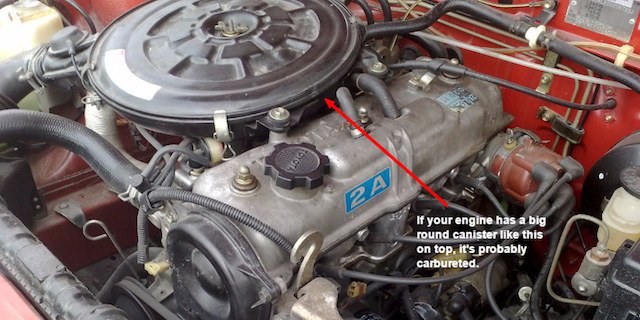When Is It Time to Replace Your Fuel Pump?
The answer to “When is it time to replace a fuel pump?” is simple: When the pump has become defective. The problem is, how do you know when your fuel pump is defective? Fuel system problems can be hard to diagnose.

Figuring out if your vehicle needs a new GMB fuel pump isn’t always easy.
These are common symptoms of a potentially bad fuel pump:
- A lack of power when “under load” (at highway speeds or laden with people/cargo).
- An engine that is hard to start or won’t start.
- An engine that “chokes out” or dies after running for a while or up to temperature.
- A check engine light that returns a lean code from the engine’s computer.
- A whining noise from the fuel tank area (usually under the rear seat or at the rear of the vehicle).
But, with the exception of a whining noise from the fuel tank, these are also symptoms of problems with a half dozen other systems. Determining if a fuel pump is to blame for a lack of power under “load” is often about ruling out other possible issues.
Here’s how you go about diagnosing fuel system problems, so that you can determine if you need a fuel pump or not.
Figure Out The Type Of Pump You Have
Your first step in diagnosing a fuel pump problem: Figuring out if your vehicle has a mechanical fuel pump or an electric fuel pump.
- Carbureted vehicles have mechanical fuel pumps, with few exceptions. So, if your vehicle has a carb, you probably have a mechanical fuel pump.
- On most vehicles made after 1990 (and quite a few made after 1986), the fuel pump is likely electric and located inside the fuel tank. This is because vehicles from this era use electronic fuel injection, which usually requires an electric fuel pump.
HINT: If your vehicle has a large air cleaner (filter) on top of the engine to filter air going into the engine, you likely have a carbureted engine.

Image by Hoikka1
If your vehicle has a mechanical fuel pump, it’s unlikely that the fuel pump has failed. This is because mechanical pumps tend to fail entirely…if you have a mechanical fuel pump with a problem, your engine isn’t getting any fuel at all. There’s no such thing as an intermittent mechanical fuel pump failure. Any power loss, engine ‘choke’ problems, etc. are being caused by something else.
In a fuel injected engine, electric fuel pumps can fail intermittently. So, if your vehicle has an electric fuel pump, you’ll have to keep digging.
Pressure Testing An Electric Fuel Pump
The most effective option for testing for fuel pump failure is to attach a fuel pressure gauge to the common fuel rail on a fuel injected engine. A shop manual or vehicle repair manual will have fuel pressure specs at various RPM rates, with tolerance ranges. If measured fuel pressure is not within those parameters, the pump may be faulty. Testing pressure in the lines between the fuel pump and the fuel pressure regulator will confirm either a pump failure or point towards a faulty regulator.

A fuel system pressure testing tool is essential equipment for diagnosing a faulty fuel pump. Just make sure to use one that’s accurate (see note). Image courtesy of CarNewsCafe
NOTE: A fuel system pressure test is only as good as the testing tool. If an inexpensive fuel pressure test gauge is used, false readings are possible. If you don’t have a good quality testing tool, we recommend investing in a professional tool or working with a shop to get your fuel system pressure tested. A fuel pressure gauge that’s “off” by as little as 3% can mask or falsely indicate a fuel pump problem.
If the vehicle will not start at all but the engine will crank (turn over without starting) when the key is turned, the problem could be fuel delivery. Again, testing for fuel pressure can determine whether this is the case. Another simple test is to turn the key to the “on” position without starting the vehicle and listen for the fuel pump. An electric fuel pump makes a quiet whine during initial activation, and this can be heard from outside the vehicle.
Finally, if your vehicle engine is sputtering or dying out after running for a while without problem, diagnosis can be tricky. This usually happens when the engine spends some time at cruising speeds and is then slowed down at a stop light or stop sign. In this scenario, the engine can sputter for more reasons than we can list.
However, if you have a sputtering engine and a “lean mixture” check engine code, that may indicate a fuel pump problem. The diagnosis process here is to bring the engine up to temperature and then do a fuel pressure check.
Replacing the Fuel Pump
Replacing a faulty fuel pump is not a simple task. It involves dropping the fuel tank, removing and replacing the fuel pump assembly, and then testing all work. A fuel pump replacement should also be accompanied by a fuel filter replacement and a check of the pump’s connectors (on both sides of the plugs) to ensure they are not burnt or overworked.
When you purchase a GMB fuel pump, we offer free technical support both online and by phone. Visit our catalog page to see what fuel pump options we have available for your vehicle.
MORE CONTENT
Stay current!
Sign up here to get the latest news
and updates on all things GMB.
Sign Up To Receive GMB News & Updates!

